At Computex, Micron Technology has officially introduced its next-generation GDDR7 memory, promising a revolutionary boost in performance for AI, gaming, and high-performance computing (HPC).
Built on Micron’s advanced 1β (1-beta) DRAM process node, GDDR7 delivers an introductory data rate of up to 32 Gb/s, pushing system bandwidth to an unprecedented 1.5 TB/s. Micron claims that this is set to transform user experiences, offering faster processing, richer graphics, and lower latencies.
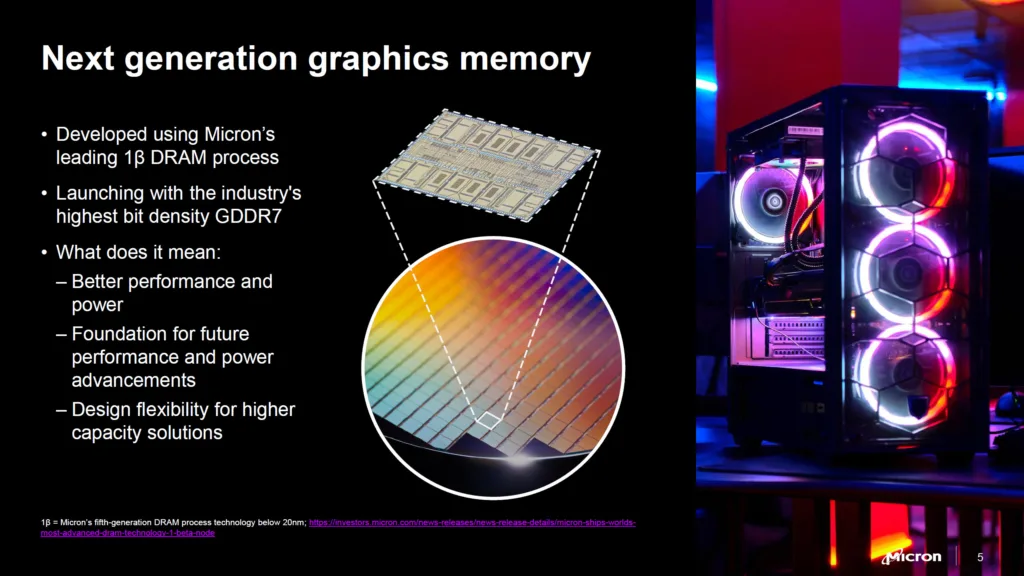
GDDR7 Performance, Efficiency, and Reliability
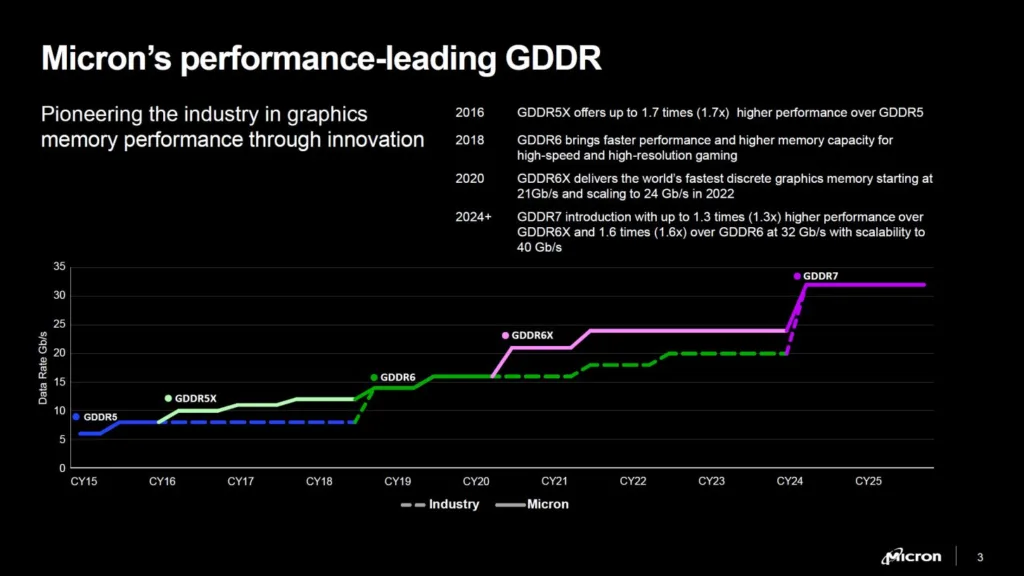
Micron’s GDDR7 is not just about raw speed. It promises significant improvements in power efficiency and device reliability. Compared to its predecessor, GDDR6, the GDDR7 boasts a 60% increase in bandwidth and more than 50% improvement in power efficiency. New sleep modes can reduce standby power consumption by up to 70%, making it a green choice for power-sensitive applications.
The potential applications for Micron’s GDDR7 are vast. In gaming, the high memory bandwidth will enable lifelike graphics rendering and smoother gameplay experiences.
For AI, the reduced response times—up to 20% faster for inference workloads like generative AI text-to-image generation—will enhance the performance of edge devices and AI-driven applications. In the HPC domain, GDDR7’s ability to handle complex calculations and simulations with reduced processing times can be a game-changer.
Since these are first-party numbers and benchmarks, the figures can be inflated. It is still unclear whether the next generation of AMD and Nvidia GPUs will use GDDR7. We must wait until we get a product with GDDR7 to test its real-world capabilities.
Also Read: Samsung Spearheads Next-Generation Graphics with GDDR7 Memory
Micron DDR7 PAM3 Encoding
One of the standout features of Micron’s GDDR7 is its use of PAM3 (pulse-amplitude modulation 3) encoding. Unlike previous GDDR standards which used non-return-to-zero (NRZ) signaling, PAM3 uses three distinct voltage levels (-1, 0, +1) to encode data, enabling a 50% higher voltage margin and lower encoder complexity.
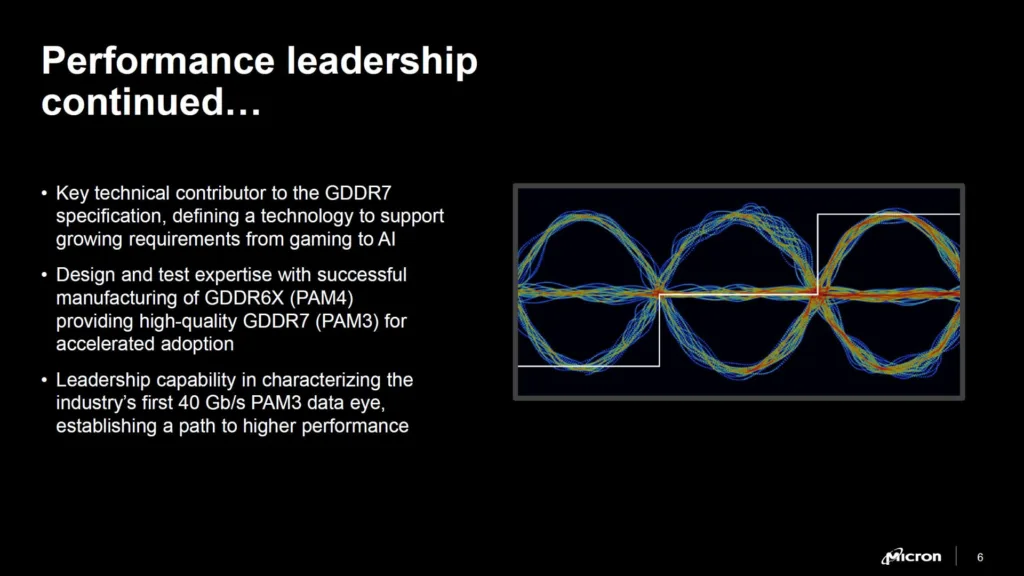
This innovation builds on Micron’s success with GDDR6X, which used PAM4 signalling. While PAM3 offers slightly lower bits per cycle compared to PAM4, it significantly enhances data transmission reliability and efficiency.
Lower Power, Higher Thermal Performance
Operating at a lower voltage of 1.2V, Micron’s GDDR7 also introduces power-saving features such as split voltage planes and partial device operation. Additionally, the new memory boasts a thinner package height (1.1mm vs. 1.2mm) and enhanced thermal resistance, providing a 65% improvement in thermal performance.
Expanded RAS (Reliability, Availability, Serviceability) features, including OD-ECC, hPPR, CA parity, and 9-bit CRC, further bolster the reliability of the GDDR7 memory.
Also read: CAMM2 Memory Standard published by JEDEC; upto 128GB capacity and 8.5Gbps speed
When can we see GDDR7 in mainstream products?
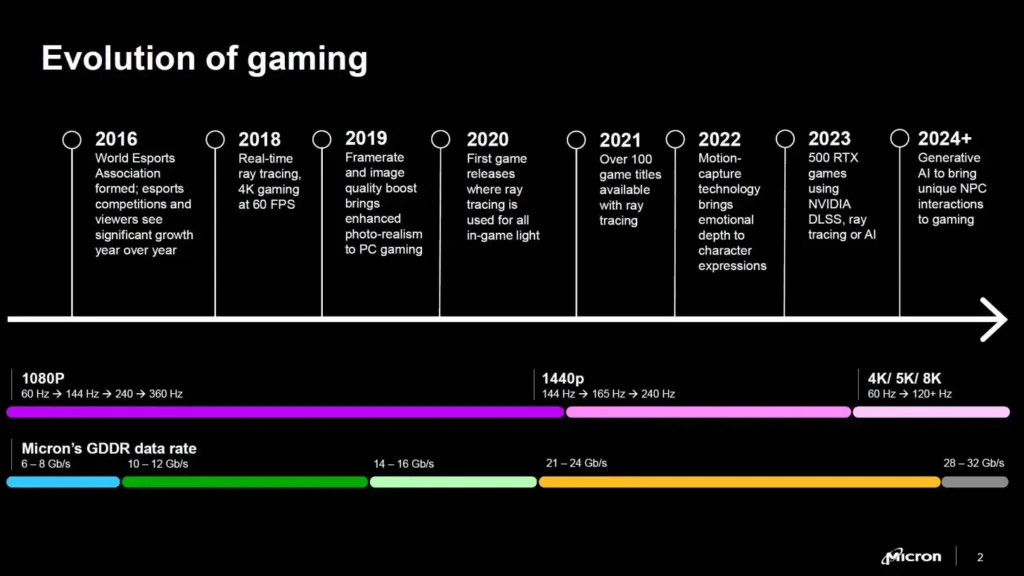
GDDR7 memory will be available from Micron directly and through select global channel distributors and resellers starting in the second half of 2024. Nvidia and AMD will likely use GDDR7 in their upcoming higher-end GPUs. (No official confirmation yet)
At AMD we are committed to creating the most immersive gaming experiences. Our work with Micron on GDDR7 advances our shared goal. We are excited about Micron’s launch of GDDR7, and we look forward to leveraging this technology to make gaming even more responsive and lifelike.
Joe Macri, senior vice president and corporate fellow at AMD
| GRAPHICS MEMORY | GDDR7 | GDDR6X | GDDR6 |
| Workload | Gaming / AI | Gaming / AI | Gaming / AI |
| Die Capacity (Gb) | 16-64 | 8-32 | 8-32 |
| System bandwidth | 1.5 TB/s | 1 TB/s | 960 GB/s |
| GB/s per pin | 32 | 19-24 | 14-16 |
| Frame Buffer of Typical System | 24 GB? | 24 GB | 12GB |
| Number of Placements | 12? | 12 | 12 |
| GB/s per placement | 128-144 | 76-96 | 56-64 |
| Average Device Power (pJ/bit) | TBD | 7.25 | 7.5 |
| Module Package | 266 (BGA) | 180 (BGA) | 180 (BGA) |
| Typical IO Channel | PCB (P2P SM) | PCB (P2P SM) | PCB (P2P SM) |
| Package dimensions | 12 x 14 x 1.1 mm | 12 x 14 x 1.2 mm | 12 x 14 x 1.2 mm |
| Encoding | PAM3 | Non-return-to-zero (NRZ) | Non-return-to-zero (NRZ) |
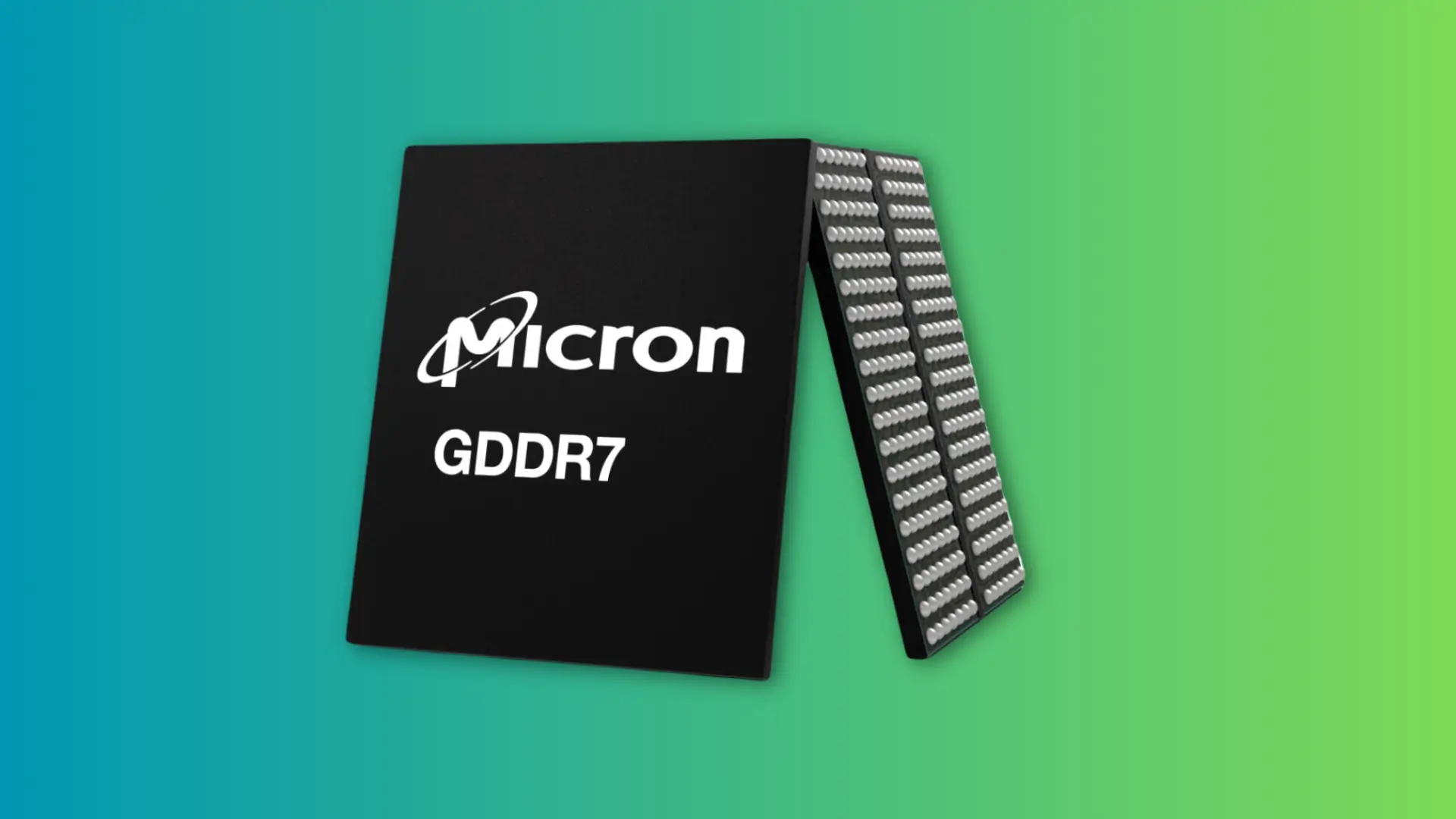
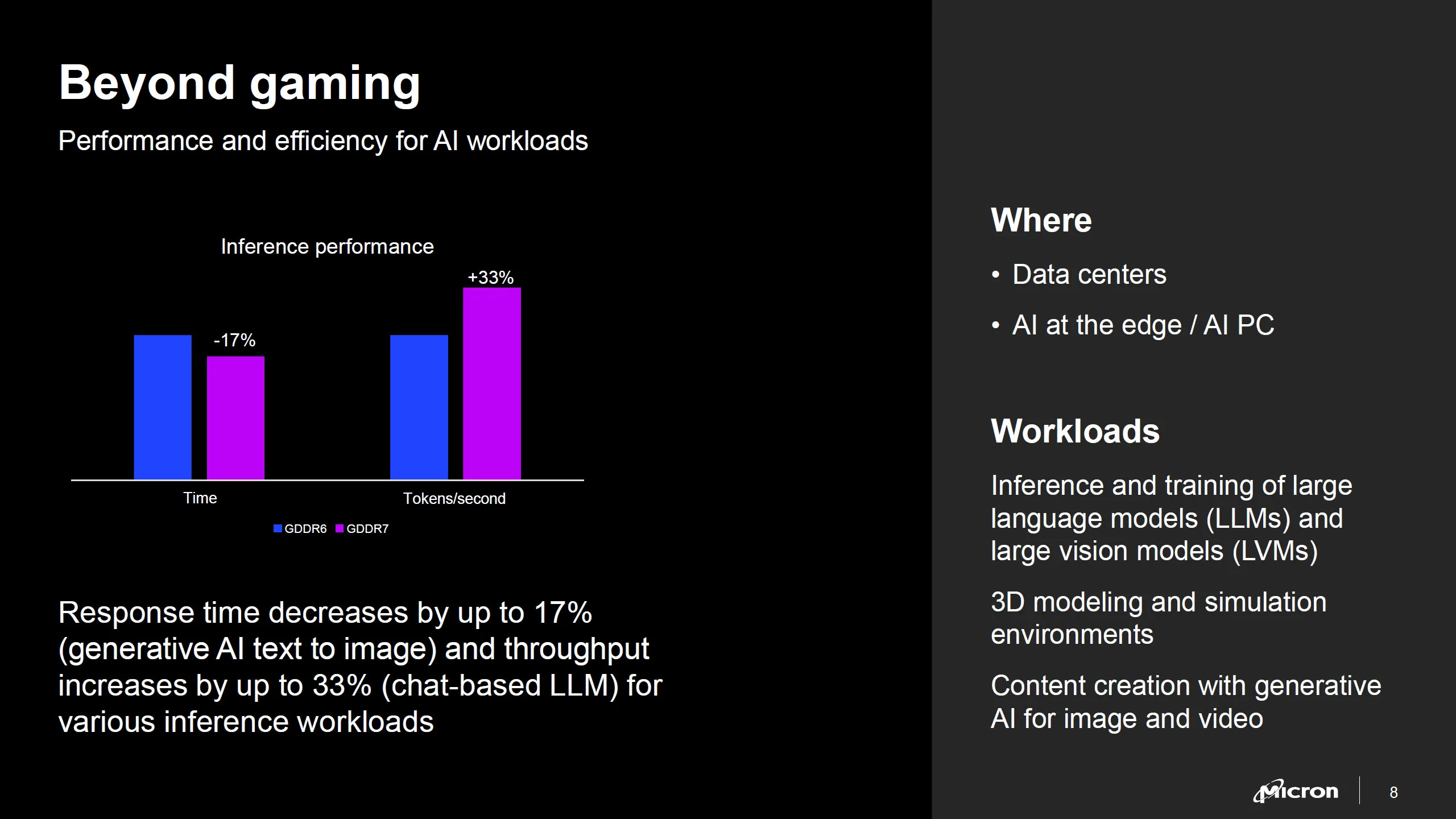
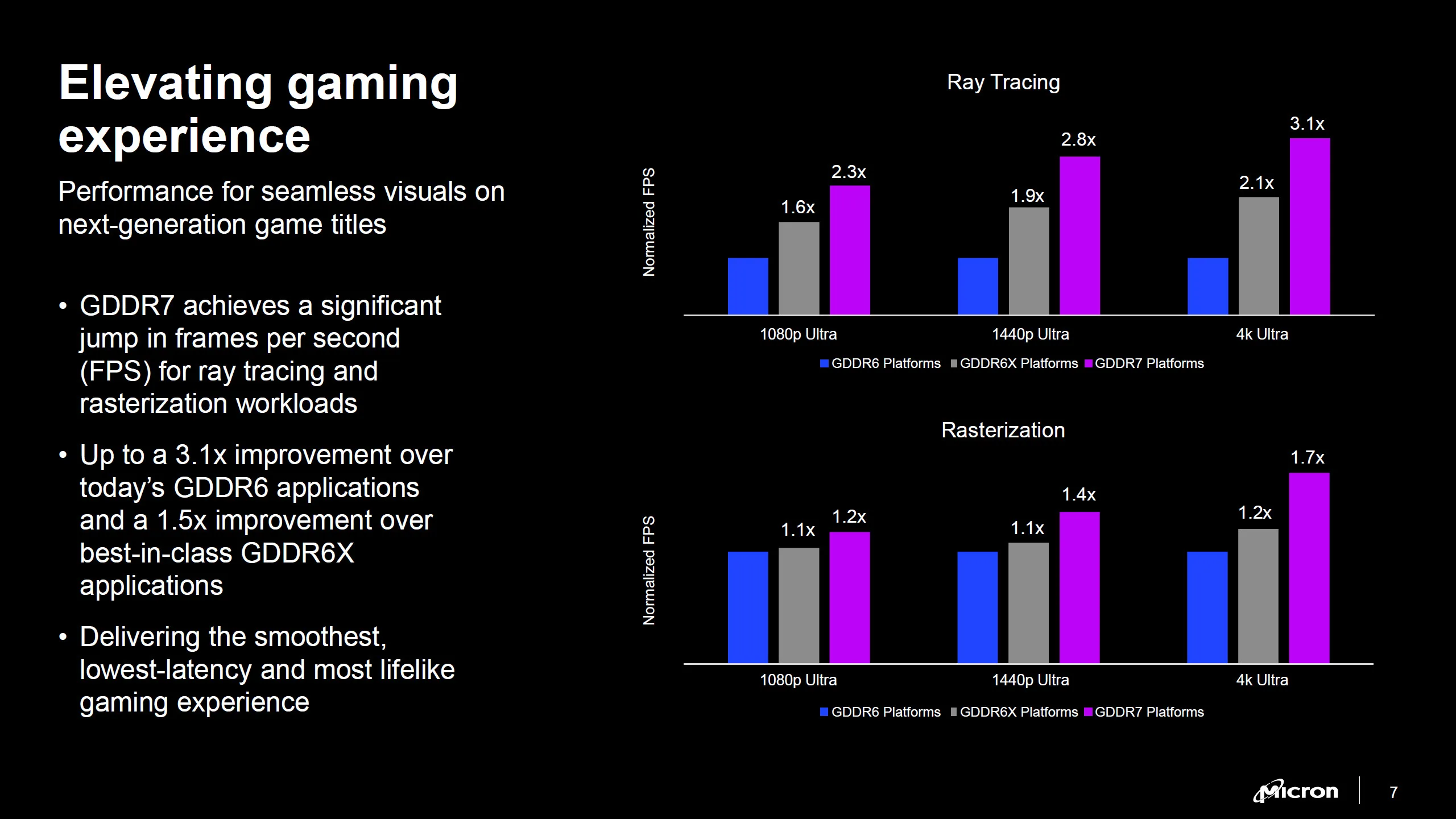
Leave a Reply
You must be logged in to post a comment.